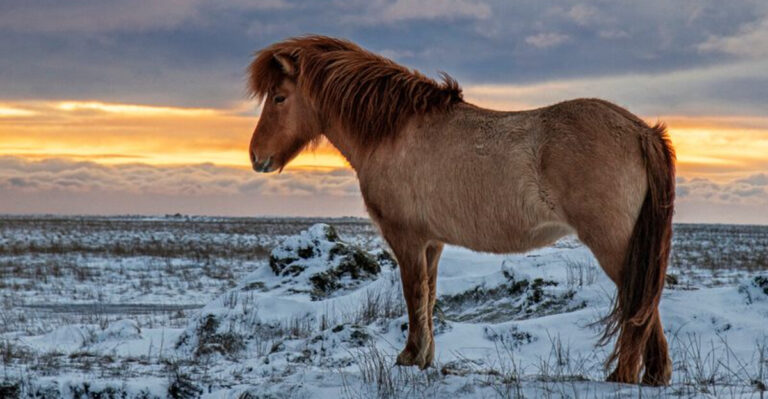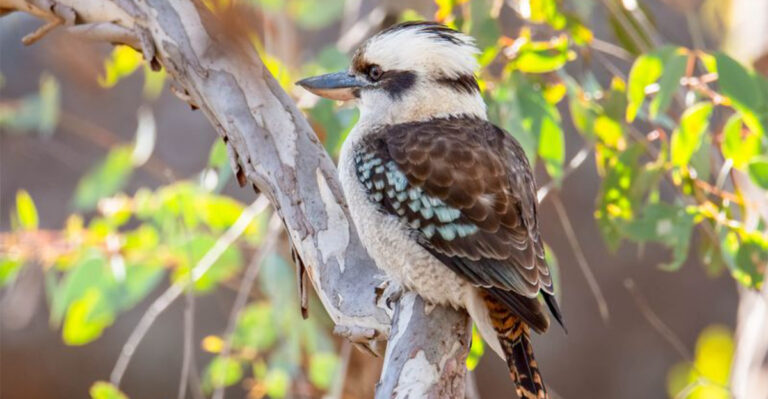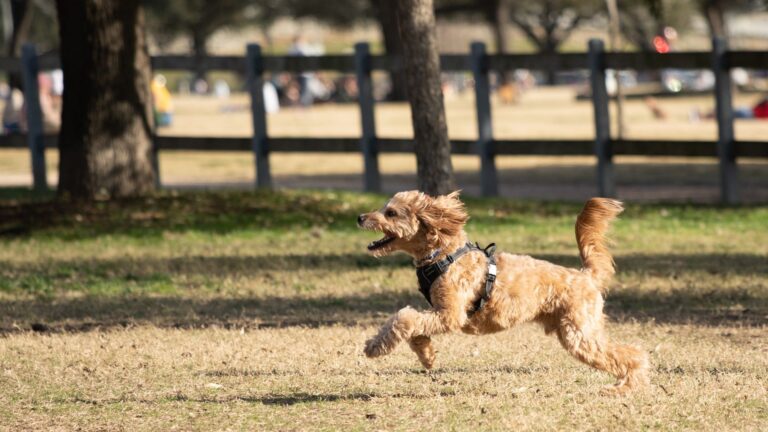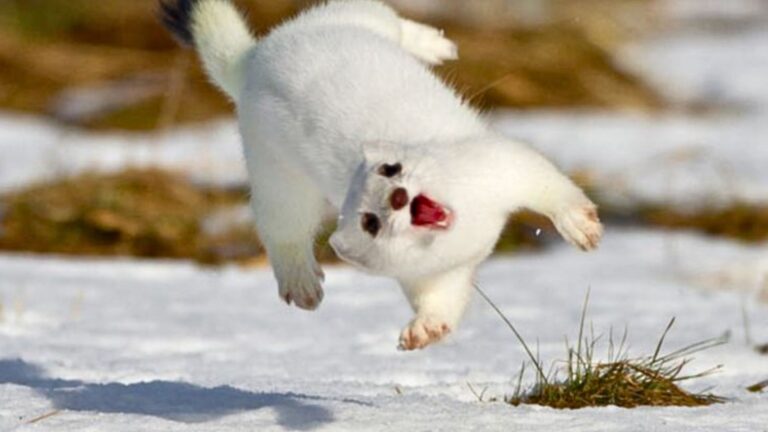What Horse Expressions Reveal About Their Emotions
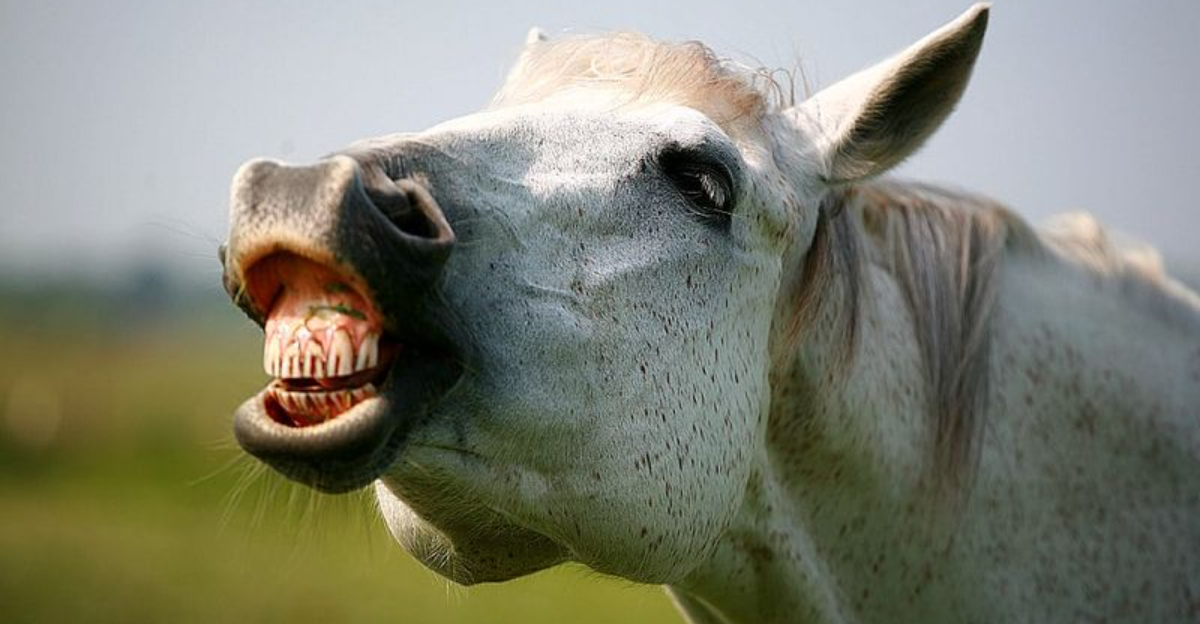
Horses communicate through a rich language of facial expressions, ear positions, and body movements. As prey animals, they’ve evolved to express their feelings subtly yet clearly to those who know what to watch for.
Understanding these silent signals not only keeps you safer around these powerful animals but also helps build a deeper connection with your equine friend.
How To Spot The Signs Of A Happy Or Stressed Horse
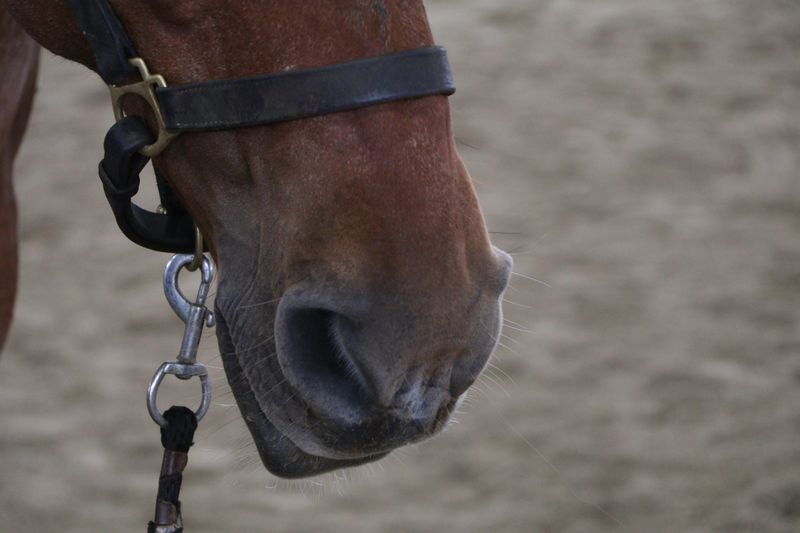
A content horse carries itself with a relaxed posture and soft, curious eyes. You’ll notice a gentle swinging tail, loose lower lip, and perhaps even a soft nickering sound when they’re pleased.
Stressed horses display tight muscles, especially around the muzzle and eyes. Their movements become jerky or frozen, and breathing often quickens noticeably.
Watch for pawing, excessive sweating in cool weather, or repetitive behaviors like weaving. These actions signal discomfort or anxiety. Learning these contrasting states helps you address your horse’s needs before small stresses become major problems.
What A Horse’s Eyes And Ears Can Tell You
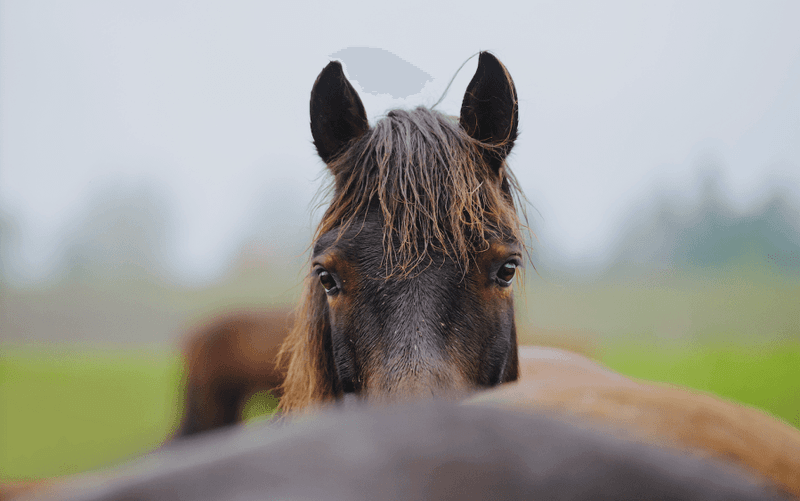
Ears pointed forward show interest and attention – your horse is focused on something ahead. When those same ears swivel independently, they’re monitoring multiple sounds in their environment, staying alert like the prey animals they are.
The eyes reveal even more nuanced feelings. A soft, blinking gaze indicates relaxation, while wide, showing-the-whites eyes (called ‘whale eye’) signal fear or anxiety. Half-closed eyes often mean your horse is relaxed or possibly drowsy.
Rapid blinking or a fixed stare might indicate pain or concern. These subtle eye movements evolved as crucial survival mechanisms in the wild.
Understanding Mood Through Movements And Posture
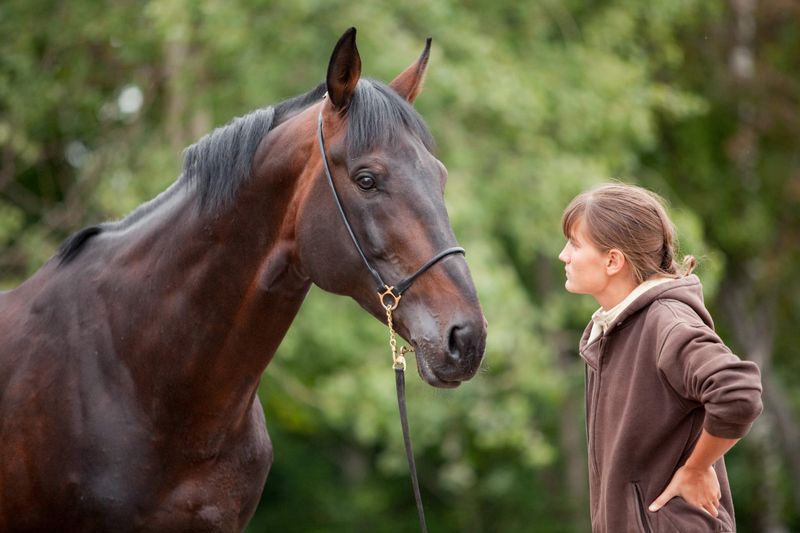
A horse’s entire body tells a story of its emotional state. Loose, flowing movement with a rhythmic swing indicates confidence and contentment. Their neck will be level or slightly lowered, not stiffly arched or tucked.
Anxious horses often appear rigid, with high-headed postures and tense muscles along the topline. You might notice quick, choppy steps or an inability to stand still.
Watch for weight shifts too – a relaxed horse stands squarely on all four legs, sometimes resting a hind foot. A horse consistently leaning away or bracing against pressure is communicating discomfort or resistance. These postural clues provide valuable insights before more obvious behaviors emerge.
Why Horses Pin Their Ears Or Show Their Teeth
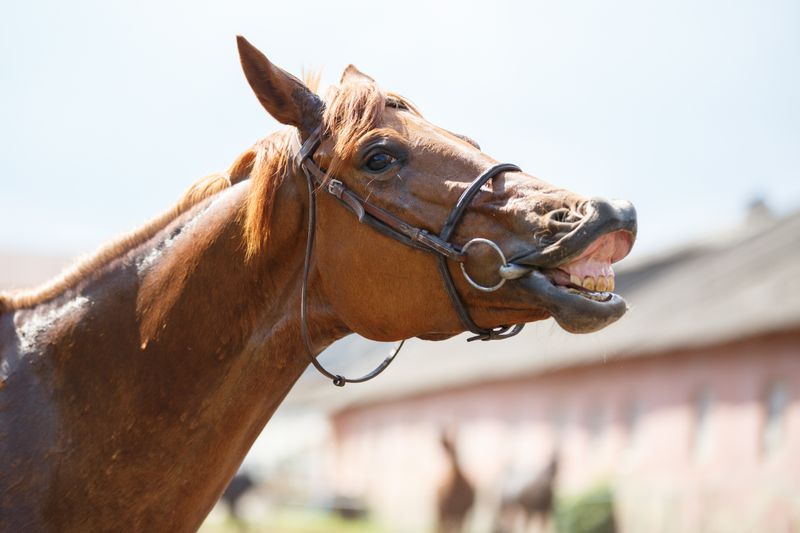
Flattened ears pressed against the neck serve as a horse’s universal warning sign – a clear “back off” message you should never ignore. This defensive posture often precedes more aggressive actions if the perceived threat doesn’t retreat.
Teeth exposure comes in two vastly different forms. The infamous “Flehmen response” – where a horse curls its upper lip and appears to smile – actually helps them analyze scents through a special organ in the roof of their mouth.
Conversely, bared teeth with pinned ears signal aggression or severe discomfort. Young horses sometimes display a submissive “clacking” of teeth when meeting dominant horses, showing deference to avoid conflict. Context matters tremendously when interpreting these facial signals.
The Most Common Facial Clues Horses Give Off
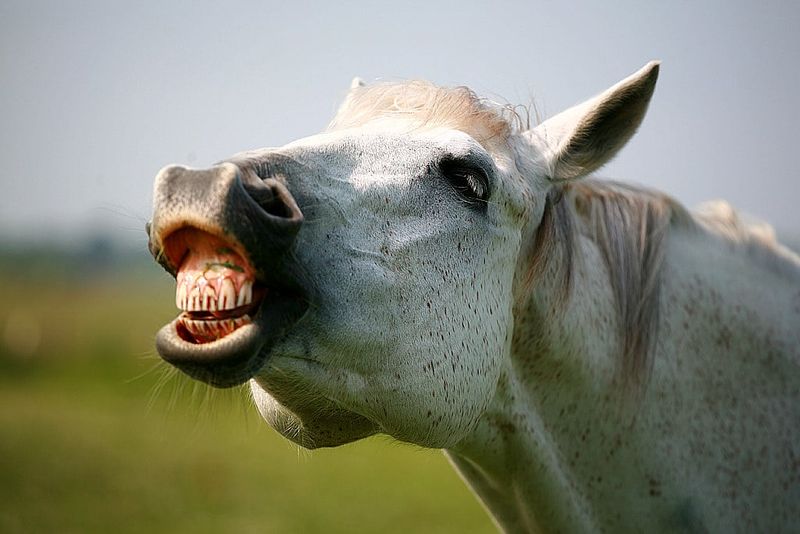
Nostril flaring can indicate excitement, fear, or simply increased oxygen needs during exercise. The size and tension around the nostrils often reveal intensity of emotion.
Muzzle tension speaks volumes; a soft, relaxed muzzle with a slightly drooping lower lip signals contentment, while tight, puckered lips suggest anxiety or concentration. Many horses will lick and chew when processing new information or releasing tension.
Wrinkles above the eye, called “worry wrinkles,” appear when horses feel concerned or uncertain. The jaw also reveals emotional states; grinding teeth often indicates stress or pain, while a slack jaw suggests relaxation. These subtle facial cues provide a window into your horse’s changing emotional landscape.
How Horses Use Body Language To Communicate
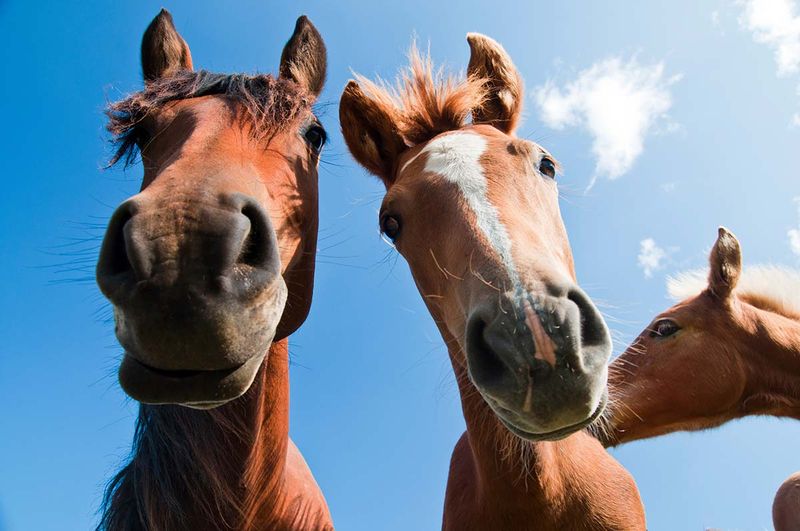
Tail position speaks volumes; a relaxed, gently swinging tail indicates contentment, while a clamped-down tail suggests tension or fear. An elevated, flagged tail shows excitement or high alertness. Horses communicate through physical contact too.
Mutual grooming between horses builds bonds and reduces stress. Watch for subtle nudges, which can be requests for attention or attempts to establish personal space. The entire body participates in communication.
A lowered head invites approach, while pawing often expresses impatience or frustration. Rearing, striking, or kicking serve as dramatic punctuation marks in equine conversations – serious warnings that demand immediate respect.
Learning this silent language transforms your interactions from confusion to clear communication.
What To Look For In A Calm Or Nervous Horse
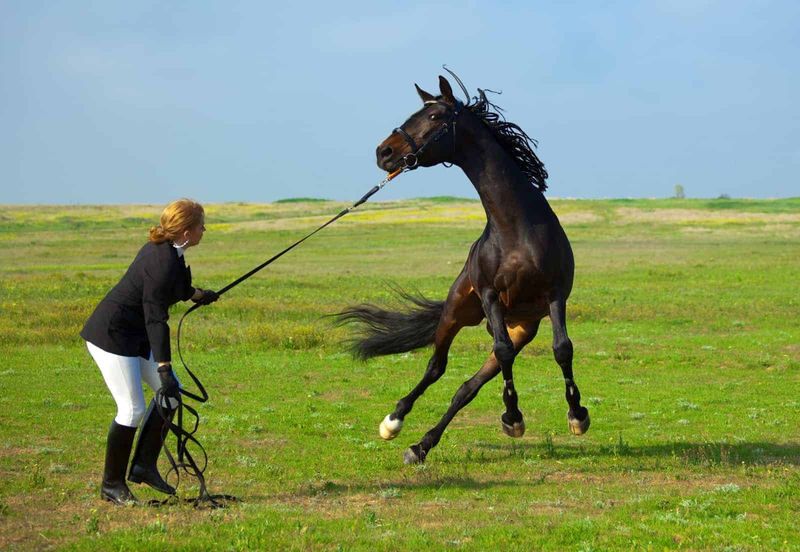
A calm horse stands with a relaxed lower lip, often resting a hind leg in the classic “three-legged” stance. Their breathing remains slow and steady, with soft eyes that blink regularly. Nervous horses rarely stand still, shifting weight frequently and scanning their environment with quick head movements.
You’ll notice flared nostrils, tense muscles around the eyes, and possibly trembling in the neck or shoulders. Manure offers surprising clues too – loose droppings often indicate stress.
Listen for audible signals: deep sighs typically signal relaxation, while frequent snorting or blowing might indicate heightened alertness or concern. Recognizing these contrasting states helps you adjust your approach before minor nervousness escalates.
How To Tell If Your Horse Is Relaxed Or Anxious
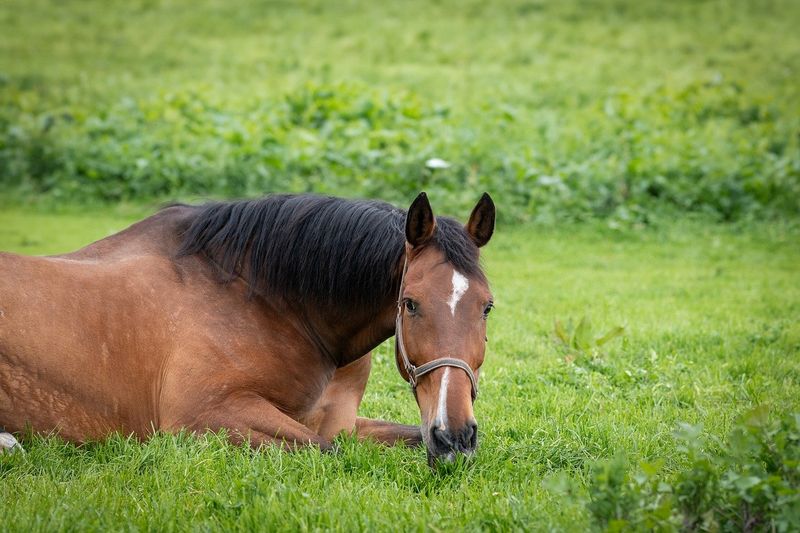
Muscle tension reveals emotional states at a glance – a relaxed horse has a soft topline with rounded muscles, particularly noticeable across the back and neck. Their movements flow smoothly without jerky transitions.
Anxious horses display a different picture: tight jaw muscles, visible tension along the neck, and quivering skin responses to light touches. Their breathing becomes shallow and rapid, sometimes with visible flank movements.
Yawning, contrary to what you might expect, often signals stress release rather than tiredness in horses. Watch ground behavior too – relaxed pawing while dozing differs dramatically from the intense, repetitive pawing of an anxious horse.
These physical manifestations of internal states help you gauge your horse’s comfort level in changing situations.
Simple Ways To Read A Horse’s Mood At A Glance
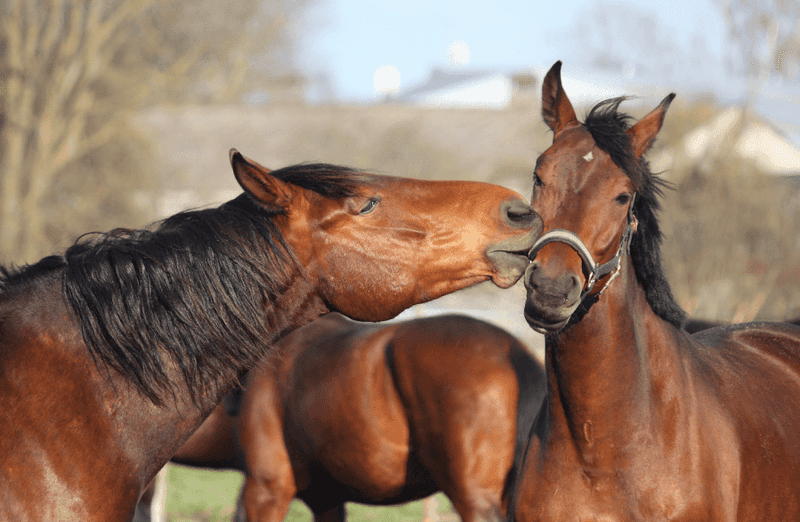
Energy level offers immediate mood insights – a horse moving with rhythmic, measured steps likely feels confident and comfortable. Erratic speed changes or explosive movements suggest internal tension or uncertainty.
Focus direction reveals mental state. A horse genuinely attentive to you has ears that track your movement and eyes that remain soft. One fixated elsewhere or constantly scanning may be distracted or concerned about potential threats.
Response to touch provides telling feedback. A relaxed horse leans slightly into pleasant contact, while an anxious one flinches or moves away. Even facial expressions change quickly; a tightening around the eyes or sudden ear movement signals emotional shifts long before more obvious behaviors appear.
Why Learning These Signals Can Help You Bond Better
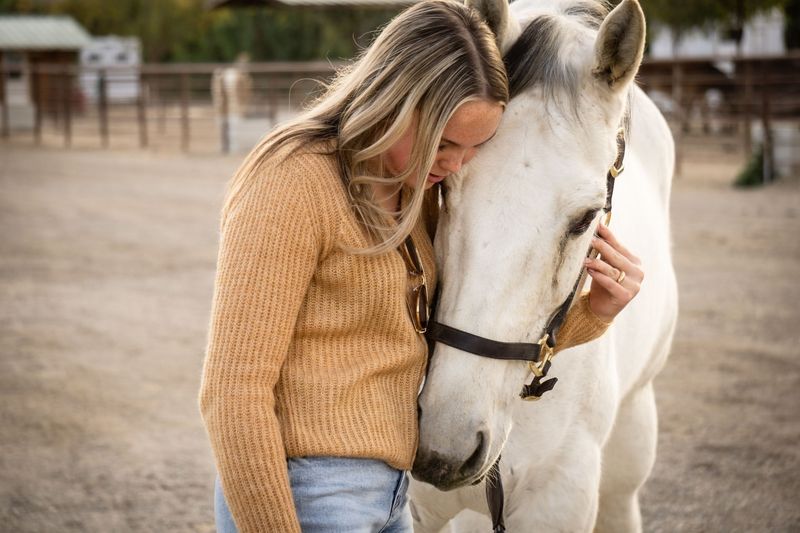
Recognizing subtle emotional cues transforms your relationship from handler to trusted partner. When you respond appropriately to early signs of discomfort, you build a foundation of trust that prevents escalation to fear or resistance.
Horses remember how you react to their communication attempts. A horse whose early signals are acknowledged learns you’re trustworthy and develops confidence in your leadership. This emotional attunement creates magical moments, like when a nervous horse sighs and relaxes in your presence, or when a typically aloof animal seeks your company.
Understanding equine emotional language isn’t just fascinating – it’s the gateway to that special connection that makes horses such extraordinary companions. Their silent language, once understood, speaks volumes about their trust in you.

